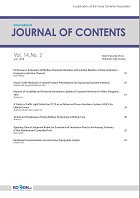- 권한신청
- P-ISSN1738-6764
- E-ISSN2093-7504
- KCI
 ISSN : 1738-6764
ISSN : 1738-6764
Effects of Sling Bridge Exercise with Rhythmic Stabilization Technique on Trunk Muscle Endurance and Flexibility in Adolescents with Low Back Pain
심기철 (동신대학교)
김태곤 (동신대학교)
배세현 (동신대학교)
이준철 (Samil Jungpoong Hospital)
김기도 (한국국제대학교)
Abstract
The purpose of this study was to examine the effects of general sling-bridge exercise (GSE) and sling-bridge exercise with rhythmic stabilization technique (SER) on trunk muscle endurance and flexibility in adolescents with low back pain (LBP). 30 adolescents who had complaints of LBP were randomly assigned to one of the two groups: the GSE group (n=15) and SER group (n=15). Subjects performed each exercise programs for 4 weeks with the aim of improving trunk muscle stability; GSE group trained general bridge exercise with sling, SER group trained rhythmic stabilization bridge exercise with sling. The static and dynamic trunk muscle endurance and flexibility were measured before and at the end of the exercise program. The static and dynamic trunk muscle endurance were significantly improved in both groups (p<.05) and the SER group showed significant difference from the GSE group after the exercise (p<.05). The trunk muscle flexibility was significantly improved in both groups (p<.05) and the SER group were significantly different from GSE group post-exercise (p<.05). The results of this study showed that sling bridge exercise with rhythmic stabilization technique may be appropriate for improving trunk muscle stability in adolescents with LBP.
- keywords
- Low Back Pain, Sling-Bridge Exercise, Rhythmic Stabilization Exercise, Muscle Endurance, Flexibility.
- 다운로드 수
- 조회수
- 0KCI 피인용수
- 0WOS 피인용수

